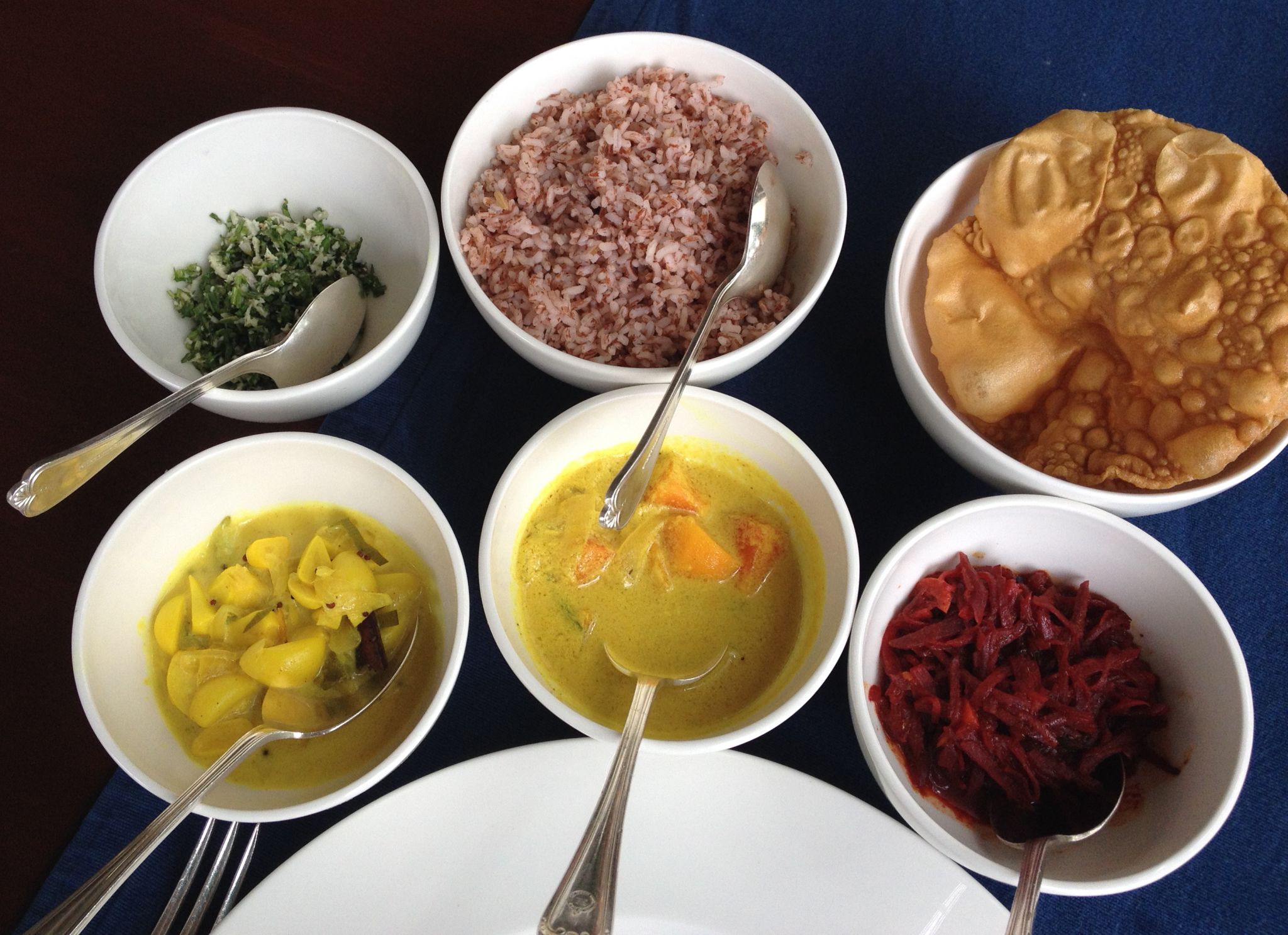Ayurvedic tastes describe the qualities of food and their affects on the body. The six tastes are sweet, sour, salty, bitter, pungent and astringent. In the Western diet we are quite familiar with the first four tastes. The pungent taste is very hot as found in chilli pepper and astringent is light and dry, like that in popcorn. Ayurveda guides us to include all tastes in each meal. From a nutritional science perspective sweet foods provide carbohydrate, fat, protein and water, where as the bitter, sour and astringent ones are high in vitamins, minerals and antioxidants.
Overview of Ayurvedic Tastes
The table below provides the Ayurvedic perspective.
| Taste | Elements | Foods | Primary Action |
| Sweet | Water and Earth
Heavy and moist |
Fruits such as mango, grains (wheat, rice, barley), natural sugars, milk, cooked root vegetables (carrots, sweet potato) | Builds and strengthens all body tissues, calms the nervous system |
| Sour | Earth and Fire
Hot, light, moist |
Sour fruits, yoghurt, fermented foods e.g. pickles | Stimulates digestion, supports circulation and elimination, increases absorption of minerals such as iron |
| Salty | Fire and Water
Hot, heavy, moist |
Natural salts, sea vegetables and processed foods with added salt | Mild laxative, in small amounts stimulates digestion, maintains mineral balance |
| Bitter | Air and Space
Light, cooling, dry |
Dark leafy greens, zucchini and eggplant, herbs and spices e.g. turmeric, dandelion root | Detoxifies and has antibiotic and anti-parasitic properties. Helps to calm the mind. |
| Pungent | Fire and Air
Hot, light, dry |
Chilli peppers, garlic, onions and spices such as black pepper, ginger, cayenne. | Stimulates digestion and metabolism, promotes sweating and detoxification and aids circulation. |
| Astringent | Air and Earth
Dry, cooling, heavy |
Lentils, raw fruits (cranberries, pear), dried fruit and vegetables (broccoli, cauliflower, asparagus), some grains (quinoa, buckwheat) herbs (marjoram) and spices (turmeric), coffee. Dry foods such as crackers and chips and raw vegetables the skins have astringent properties too. | Helps to stop bleeding and other excessive discharges such as diarrohea. Promotes healing of the skin. |
Select Your Food Mindfully
Ayurveda encourages us to be mindful in our selection of tastes, allowing our body to direct our choice of foods. If we were to follow our instincts we would eat foods that balance our elements or constitution.
Ayurvedic Doshas
The Ayurvedic constitutions are a combination of the doshas; vata, pitta and kapha. Usually people have more than one dosha combination, for example ‘pitta and vata’.
- Vata is air in space, translated as wind. It provides our motivation and movement. The vata nature is dry, cold and light and is balanced by sweet, sour and salty tastes.
- Pitta is fire in water, translated as bile. It digests in a physical and mental sense. Pitta is hot, light and cold by nature and is balanced by sweet, bitter and astringent tastes.
- Kapha is water in earth, translated as phlegm. It provides physical and emotional support. Kapha has a heavy, cold and moist nature that is balanced by pungent, bitter and astringent tastes.
Western science does not have an equivalent dosha model, however genetic research may in time discover a similar model. Many Ayurveda recommendations are in line with nutritional science though. For example, if you have a vata imbalance and have difficulty maintaining your body weight, you would be encouraged to eat Ayurvedic sweet foods. A kapha imbalance may mean that you gain weight easily or have high blood cholesterol. From both an Ayurvedic and Western perspective lower energy (kilojoules) foods that are high in vitamins, mineral and antioxidants would be recommended. Next week we will have a closer look at the doshas.
